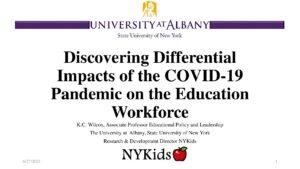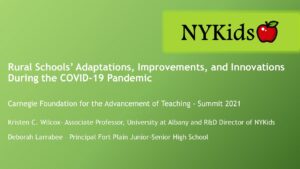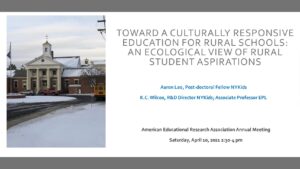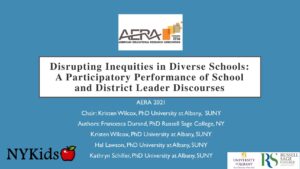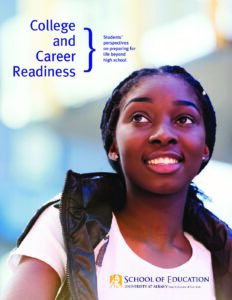Publication Year: 2021
This presentation entitled “Discovering Differential Impacts of the COVID-19 Pandemic on the Education Workforce” was delivered at the 2021 Summer Symposium: Differential Impacts of COVID-19 in New York State hosted by the University at Albany (SUNY).
In this presentation, Dr. Kristen Wilcox outlines some of the findings from NYKids’ study “Discovering Differential Impacts of the COVID-19 Pandemic on the Educator Workforce in New York State.” As shown in this study, educators who work at schools with higher numbers of economically disadvantaged students demonstrated higher levels of stress and workplace dissatisfaction measured through both quantitative and qualitative analysis.
This Carnegie Foundation Summit presentation revisits Fort Plain Junior Senior High school which has partnered with NYKids for a number of years in using NYKids’ positive outlier/deviance research in combination with improvement science-based processes and tools in what we call COMPASS.
The Carnegie Foundation for the Advancement of Teaching hosts a summit every year that convenes representative from grant funding organizations, policymakers, researchers and professional practitioners among others in efforts to “learn to get better at getting better”. This year NYKids in partnership with Fort Plain Junior Senior High School, share how we have worked to translate research into practical improvements for navigating the pandemic. Carnegie’s virtual summit provides participants opportunities to learn about improvement science from Carnegie staff as well as learn from other improvers about how they have pursued their improvement work in all levels of education and from the U.S. and around the world. In this week’s blog we share some key highlights from NYKids’ Carnegie Summit presentation available on-demand from April 23rd-April 28th for those who might still have time to participate. This presentation may be of particular interest to those interested in improvement science. This blog offers links to our powerpoint and upcoming workshops and intensive direct support opportunities NYKids will be offering in the coming weeks to assist school and district leaders and their improvement teams navigate their fall reopening planning.
2021 AERA Presentation on Rural Student Aspirations
Using Bronfenbrenner’s ecological theory of development, this presentation explores the multiple factors which influence rural youth’s aspirations. This case study draws on data gathered at Crown Point Central School over the course of several years.
2021 AERA Presentation: Disrupting Inequities in Diverse Schools: A Participatory Performance of School and District Leader Discourses
This presentation given at the 2021 AERA Conference discusses how district and school leaders in positive outlier schools frame priorities and challenges they face.
This cross-case report is the second phase of our College and Career Readiness study and is entitled: Students’ Perspectives on Life After High School. This phase focuses on students’ voices from two of the positive outlier schools that participated in the first phase of our study.
This cross-case report is the second phase of our College and Career Readiness study. This report, entitled, Students’ Perspectives on Life After High School focuses on students’ voices from two of the positive outlier schools that participated in the first phase of this study. These two schools, Malverne Senior High School and Crown Point Central School, qualify as positive outliers because they are “atypical” in the sense that they have achieved a trend of above-predicted graduation rates among different populations of students consistently over time.

